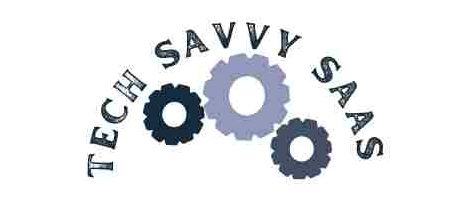Data deluge describes the phenomenon where organizations are overwhelmed by the vast and rapidly increasing volume of data. This surge in data comes from numerous sources, such as social media, IoT devices, and transactional systems. The sheer volume of this data necessitates advanced data management strategies and tools to process and analyze it effectively.
- Volume and Growth: As of 2023, global data creation is projected to reach 120 zettabytes by 2025, representing an exponential growth of data. This includes structured data (e.g., databases) and unstructured data (e.g., social media posts) (source: IDC, 2023).
- Sources: Data originates from diverse channels such as cloud storage, social media, business transactions, and sensors (source: McKinsey, 2022).
- Processing Needs: Handling such a vast amount of data requires sophisticated analytics tools and machine learning algorithms to extract valuable insights and drive data-driven decision-making.
The concept of data deluge highlights the critical role of big data and effective data management strategies in today’s data economy. Organizations must adopt robust data governance practices and innovative data processing technologies to stay competitive.

The Significance of Navigating Big Data Trends
Successfully navigating big data trends provides organizations with a significant competitive edge. It enables them to leverage data for better strategic planning, operational efficiency, and customer engagement.
- Competitive Edge: Companies that harness big data analytics effectively gain insights that can lead to improved product development, optimized marketing strategies, and enhanced customer experiences (source: Gartner, 2024).
- Data-Driven Decisions: Effective navigation of big data allows for data-driven decision-making, where predictive analytics and real-time data processing play crucial roles in strategic planning and execution.
Navigating these trends ensures that businesses remain agile and responsive to changes in the market, leveraging data to their advantage, and fostering innovation.
Why It Matters to Businesses and Individuals
For businesses, mastering data analytics and ensuring data quality are paramount. Proper handling of big data facilitates informed decisions and drives innovation. Organizations that excel in data management can leverage insights to enhance their operations and maintain a competitive advantage.
- Informed Decisions: Businesses that use data-driven insights can make more accurate forecasts, optimize operations, and tailor their offerings to customer needs. For example, Netflix utilizes big data to recommend content based on viewing patterns, significantly boosting user engagement (source: Harvard Business Review, 2023).
- Innovation: Companies using machine learning and artificial intelligence for data analysis can identify new market trends and develop innovative solutions. Google employs advanced AI to enhance search algorithms and improve the user experience (source: Google AI Blog, 2024).
Individuals also benefit from improved data management practices. Enhanced data security and user experiences result from the effective handling of personal data. For instance, personalized recommendations on platforms like Amazon enhance shopping experiences by leveraging big data (source: Amazon Research, 2023).
- Data Security: Better data management ensures that personal information is protected from breaches, reducing the risk of identity theft and ensuring data privacy.
- User Experiences: Improved data quality and management lead to more relevant and customized services, enhancing overall satisfaction.
Understanding Big Data
Defining Big Data
Big data is characterized by its sheer volume, velocity, and variety. These defining traits present both significant challenges and unique opportunities for data processing and analytics.
- Volume: The volume of big data refers to the massive amounts of data generated every second. For instance, by 2025, it’s estimated that the world will generate 120 zettabytes of data annually (source: IDC, 2023).
- Velocity: Velocity indicates the speed at which data is created and processed. Real-time data processing is crucial for industries such as finance, where decisions must be made based on live data streams.
- Variety: Variety encompasses the different types of data—from structured (e.g., databases) to unstructured (e.g., social media posts, emails). Handling this diverse data requires advanced data management and analytics tools (source: McKinsey, 2022).
These characteristics make managing big data both challenging and rewarding. Organizations must implement advanced data management strategies to effectively leverage these three V’s and turn data deluge into actionable insights.
The Evolution of Big Data
The evolution of big data reflects a shift from basic data collection methods to sophisticated technologies such as machine learning and artificial intelligence.
- Early Stages: Initially, data collection was simple, involving the basic storage and processing of structured data in relational databases.
- Advanced Analytics: Over time, the focus shifted to more advanced data analytics techniques. The advent of big data technologies like Hadoop and Spark enabled organizations to handle large datasets and perform complex data analysis.
- Machine learning and AI: Today, machine learning and artificial intelligence are at the forefront of big data evolution. These technologies use data to train algorithms that predict outcomes and automate decision-making processes. For example, Google uses AI for search algorithms and personalized recommendations (source: Google AI Blog, 2024).
This evolution highlights the need for organizations to adapt and embrace cutting-edge data management technologies to stay competitive and harness the full potential of big data.
Impact of the Data Deluge on Modern Industries
Big data has a profound impact on various industries, transforming how businesses operate and make decisions. Here are two prominent case studies illustrating this impact:
- Case Study: Healthcare
- Clinical Data Management: The healthcare industry generates vast amounts of clinical data from patient records, medical imaging, and research studies. Managing this data deluge effectively is crucial for improving patient outcomes and advancing predictive analytics.
- Predictive Analytics: Predictive analytics in healthcare can forecast disease outbreaks, personalize treatment plans, and enhance patient care. For instance, IBM Watson uses AI to analyze medical literature and patient data to assist in diagnosing diseases and recommending treatments (source: IBM Watson Health, 2023).
- Case Study: Retail
- Personalized Marketing: Retailers leverage big data to tailor marketing efforts based on customer behavior, preferences, and purchasing history. This personalization improves customer engagement and drives sales.
- Real-Time Data Processing: Real-time data processing enables retailers to adjust inventory, pricing, and promotions dynamically. For example, Amazon uses real-time analytics to recommend products and optimize its supply chain, significantly enhancing the shopping experience and boosting sales (source: Amazon Research, 2023).
Key Trends in Big Data
Trend 1: Artificial Intelligence and Machine Learning
Artificial intelligence (AI) and machine learning (ML) are at the forefront of transforming data analysis. These technologies enable organizations to extract actionable insights from vast datasets, enhancing their ability to make informed decisions and predict future trends.
- Predictive Analytics: AI and ML algorithms analyze historical data to identify patterns and forecast future outcomes. This predictive capability allows businesses to anticipate customer needs and market changes.
- Automation: AI automates complex data processing tasks, reducing the need for manual intervention and increasing efficiency in data analysis. Machine learning models continuously improve as they process more data, enhancing their predictive accuracy over time.
Real-life Example: AI in Predictive Analytics
Netflix exemplifies the use of AI-powered algorithms in predictive analytics. The platform’s recommendation system uses machine learning to analyze user viewing history and preferences, providing personalized content suggestions. This not only enhances user engagement but also drives subscription growth. For instance, Netflix’s recommendation engine is responsible for 80% of the content watched on the platform (source: Netflix Tech Blog, 2023).
Trend 2: Real-Time Data Processing
Real-time data processing enables organizations to gain immediate insights and respond swiftly to dynamic conditions. This capability is critical for maintaining agility in a data-driven landscape.
- Immediate Response: Real-time analytics provide instant feedback on data inputs, allowing businesses to make timely decisions and adjust strategies as needed. This capability is particularly valuable in fast-paced industries such as finance and e-commerce.
- Enhanced Decision-Making: Instant insights from real-time data processing enable organizations to optimize operations, improve customer service, and detect anomalies or opportunities in real-time.
Real-life Example: Social Media Analytics
Social media platforms like Twitter and Facebook use real-time analytics to monitor and manage user experiences effectively. These platforms analyze trends and user interactions as they occur, allowing for prompt adjustments to content and advertisements. For example, Twitter’s real-time sentiment analysis helps brands respond to customer feedback and manage their online reputation (source: Twitter Analytics, 2023).
Trend 3: Data Privacy and Security
The increasing data deluge raises significant challenges related to data privacy and security. As organizations collect and process more data, ensuring its protection and ethical use become crucial.
- Data Governance: Effective data governance strategies are essential for managing data security and compliance. Organizations must implement robust measures to protect sensitive information and adhere to regulatory requirements such as the General Data Protection Regulation (GDPR).
- Ethical Considerations: Data ethics involves ensuring that data is collected, processed, and used responsibly. Organizations must address concerns related to data privacy, consent, and transparency to maintain trust and comply with legal standards.
Real-life Example: Data Breaches and Their Impact
Recent data breaches highlight the urgent need for enhanced data security measures. For example, the 2023 Capital One breach exposed the personal information of over 100 million customers, underscoring the critical importance of safeguarding sensitive data. The breach resulted in significant financial and reputational damage, emphasizing the need for comprehensive data security strategies and adherence to data protection regulations (source: Capital One, 2023).
Navigating the Challenges of Data Deluge
Challenge 1: Data Management
Effective data management is crucial in addressing the data deluge and involves several best practices to handle vast amounts of data efficiently:
- Cloud-Based Solutions: Cloud-based data management solutions provide scalable storage and processing capabilities. By using platforms like Amazon Web Services (AWS) or Microsoft Azure, organizations can manage and analyze large datasets without the constraints of on-premises infrastructure. For instance, AWS’s Redshift and Azure Synapse Analytics offer scalable and cost-effective solutions for handling big data.
- Data Lakes: Implementing data lakes allows organizations to store structured and unstructured data in a centralized repository. This approach supports the integration of diverse data sources and facilitates comprehensive data analysis. For example, Google Cloud Storage and Azure Data Lake provide robust data lake services that accommodate a variety of data types and sources.
Real-life Example: Data Management Solutions
SAP offers a suite of comprehensive data management strategies designed to handle the complexities of the data deluge. SAP’s Data Intelligence platform integrates various data sources, enables real-time processing, and ensures seamless data governance. It helps organizations efficiently manage their data while maintaining high standards of data quality and security. SAP’s solutions are widely adopted across industries, including finance and healthcare, for their effectiveness in managing large-scale data environments.
Challenge 2: Data Quality
Maintaining data quality is vital for generating reliable data insights and involves implementing robust data governance practices.
- Data Governance Practices: Establishing strong data governance frameworks ensures that data is accurate, consistent, and trustworthy. Key practices include defining data ownership, implementing data quality standards, and conducting regular audits. Data governance frameworks help in monitoring data accuracy and addressing issues related to data integrity.
- Data Quality Metrics: Employing metrics such as data accuracy, completeness, consistency, and timeliness allows organizations to evaluate and improve data quality. These metrics provide a benchmark for assessing the reliability of data and making informed decisions based on accurate information.
Real-life Example: Data Quality Frameworks
Google Scholar offers valuable insights into data quality frameworks that support accurate and actionable data analysis. Research on data quality frameworks highlights methodologies and best practices for maintaining high standards of data quality. For example, the Data Quality Assessment Framework (DQAF), developed by the World Bank, provides a structured approach for evaluating and enhancing data quality across various sectors.
Challenge 3: Skill Gap
The data economy is expanding rapidly, creating a growing demand for professionals with expertise in data science and analytics.
- Skill Development: As organizations seek to leverage big data effectively, there is an increasing need for skilled professionals proficient in data management, machine learning, and data analytics. Educational institutions and online platforms offer specialized courses and certifications to bridge this skill gap.
- Continuous Learning: The rapidly evolving field of big data necessitates continuous learning and upskilling. Professionals must stay updated with the latest technologies and methodologies to remain competitive in the job market.
Real-life Example: Training and Development Programs
Big data consulting firms such as Cloudera and Deloitte are developing specialized training programs to address the skill gap in data management. These programs offer hands-on experience with big data tools and technologies, including Hadoop, Spark, and data visualization techniques. By providing practical training and certification, these programs help professionals acquire the skills needed to excel in the data economy and meet the growing demand for data science expertise. For example, Cloudera’s CDP Data Analyst certification program equips professionals with the skills required to analyze and manage large datasets effectively.
Addressing these challenges—data management, data qualityand the skill gap—is essential for successfully navigating the data deluge and harnessing the power of big data. Implementing best practices, maintaining high standards of data qualityand developing skilled professionals is key to leveraging data-driven insights for organizational success.
FAQs
What is the difference between big data and traditional data?
Big data differs from traditional data primarily in three key dimensions: volume, velocity, and variety.
- Volume: Big data involves vast datasets that far exceed the capacity of traditional data management systems. For instance, companies like Netflix generate terabytes of data daily, a scale that traditional databases struggle to handle effectively.
- Velocity: The speed at which big data is generated and needs to be processed is significantly higher than that of traditional data. Real-time data processing is essential for applications such as social media analytics, where insights must be derived instantly from live data streams.
- Variety: Big data encompasses diverse types of data, including structured, semi-structured, and unstructured data. This variety includes text, images, video, and sensor data, which require advanced analytics and data management techniques to integrate and analyze effectively.
How can small businesses benefit from big data trends?
Small businesses can leverage big data analytics to gain substantial benefits.
- Valuable Insights: By analyzing customer data and market trends, small businesses can uncover actionable insights that drive more informed decision-making. For example, small retail businesses can use customer purchase data to tailor marketing strategies and improve sales.
- Improved Decision-Making: Big data tools can help small businesses make data-driven decisions by providing comprehensive analytics on business performance and customer behavior. This enables better forecasting and strategic planning.
- Enhanced Customer Experiences: Personalization through big data allows small businesses to tailor their offerings and communications to individual customer preferences, leading to improved customer satisfaction and loyalty. Amazon’s recommendation system is a prime example of using big data to enhance the user experience.
What are the best tools for managing big data?
Effective tools for managing big data include:
- Cloud-Based Solutions: Services like Google Cloud and Amazon Web Services (AWS) provide scalable and flexible solutions for storing and processing large volumes of data. These platforms offer a range of services, including data lakes and real-time analytics.
- Data Lakes: Technologies such as AWS S3 and Azure Data Lake allow for the storage of vast amounts of raw data in its native format. Data lakes enable the integration of diverse data sources and support advanced analytics and machine learning applications.
- Big Data Tools: Tools like Apache Hadoop and Apache Spark are crucial for processing and analyzing large datasets efficiently. These open-source frameworks support distributed computing, making them suitable for handling big data challenges.
How does data privacy affect big data analytics?
Data privacy plays a critical role in big data analytics.
- Data Governance: Ensuring compliance with regulations such as the General Data Protection Regulation (GDPR) and the California Consumer Privacy Act (CCPA) is essential for protecting sensitive information and maintaining trust.
- Regulatory Compliance: Big data analytics must adhere to strict data protection standards to prevent unauthorized access and data breaches. Implementing robust data governance practices and encryption methods helps safeguard personal and business data.
- Impact on Analytics: Privacy concerns can affect the type and scope of data collected and analyzed. Organizations must balance the need for comprehensive data analysis with the need to respect user privacy and secure data.
What skills are needed to work in the big data field?
Key skills for professionals in the big data field include:
- Data Science: Expertise in statistical analysis, data modeling, and machine learning is essential for deriving actionable insights from large datasets.
- Machine learning and AI: Proficiency in machine learning and artificial intelligence techniques enables the development of predictive models and advanced analytics solutions.
- Data Governance: Understanding data governance practices and compliance regulations is crucial for managing data quality and security.
- Big Data Technologies: Familiarity with tools and technologies such as Hadoop, Spark, and cloud platforms is necessary for effective data processing and analysis.
Conclusion
The data deluge presents both challenges and opportunities in big data analytics. Embracing emerging technologies such as blockchain and quantum computing, alongside effective data management strategies, can help organizations navigate the complexities of big data and drive success.
Remaining informed about data trends ensures that businesses can adapt to technological advancements and maintain a competitive advantage. Staying updated on developments in AI, edge computing, and data privacy is crucial for leveraging the full potential of big data.
More Post
- Elevate Your Tech IQ: A Guide to the Latest Trends
- Predicting the Future of Quantum Computing and Its Applications
- The Rise of Edge Computing: A Glimpse into Tomorrow’s Technology
- 5G Technology: Shaping the Future of Connectivity
- Augmented Reality vs Virtual Reality: Which Will Dominate in the Future?






